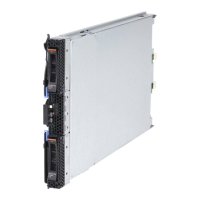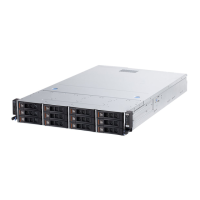18 IBM eX5 Implementation Guide
Hyper-Threading Technology is designed to improve server performance by exploiting the
multi-threading capability of operating systems and server applications in such a way as to
increase the use of the on-chip execution resources available on these processors.
Applications types that make the best use of Hyper-Threading are virtualization, databases,
email, Java™, and web servers.
For more information about Hyper-Threading Technology, go to the following website:
http://www.intel.com/technology/platform-technology/hyper-threading/
2.2.3 Turbo Boost Technology
Intel Turbo Boost Technology dynamically turns off unused processor cores and increases the
clock speed of the cores in use. For example, with six cores active, a 2.26 GHz 8-core
processor can run the cores at 2.53 GHz. With only three or four cores active, the same
processor can run those cores at 2.67 GHz. When the cores are needed again, they are
dynamically turned back on and the processor frequency is adjusted accordingly.
Turbo Boost Technology is available on a per-processor number basis for the eX5 systems.
For ACPI-aware operating systems, no changes are required to take advantage of it. Turbo
Boost Technology can be engaged with any number of cores enabled and active, resulting in
increased performance of both multi-threaded and single-threaded workloads.
Frequency steps are in 133 MHz increments, and they depend on the number of active cores.
For the 8-core processors, the number of frequency increments is expressed as four numbers
separated by slashes: the first two for when seven or eight cores are active, the next for when
five or six cores are active, the next for when three or four cores are active, and the last for
when one or two cores are active, for example, 1/2/4/5 or 0/1/3/5.
When temperature, power, or current exceeds factory-configured limits and the processor is
running above the base operating frequency, the processor automatically steps the core
frequency back down to reduce temperature, power, and current. The processor then
monitors temperature, power, and current and re-evaluates. At any given time, all active cores
run at the same frequency.
For more information about Turbo Boost Technology, go to the following website:
http://www.intel.com/technology/turboboost/
2.2.4 QuickPath Interconnect (QPI)
Early Intel Xeon multiprocessor systems used a shared front-side bus, over which all
processors connect to a core chip set, and which provides access to the memory and I/O
subsystems, as shown in Figure 2-1 on page 19. Servers that implemented this design
include the IBM eServer™ xSeries 440 and the xSeries 445.

